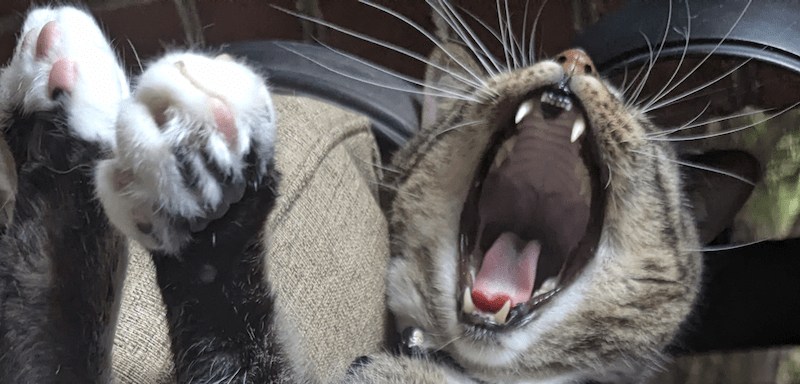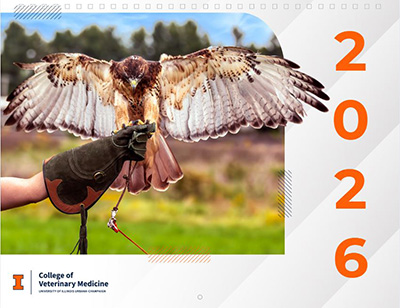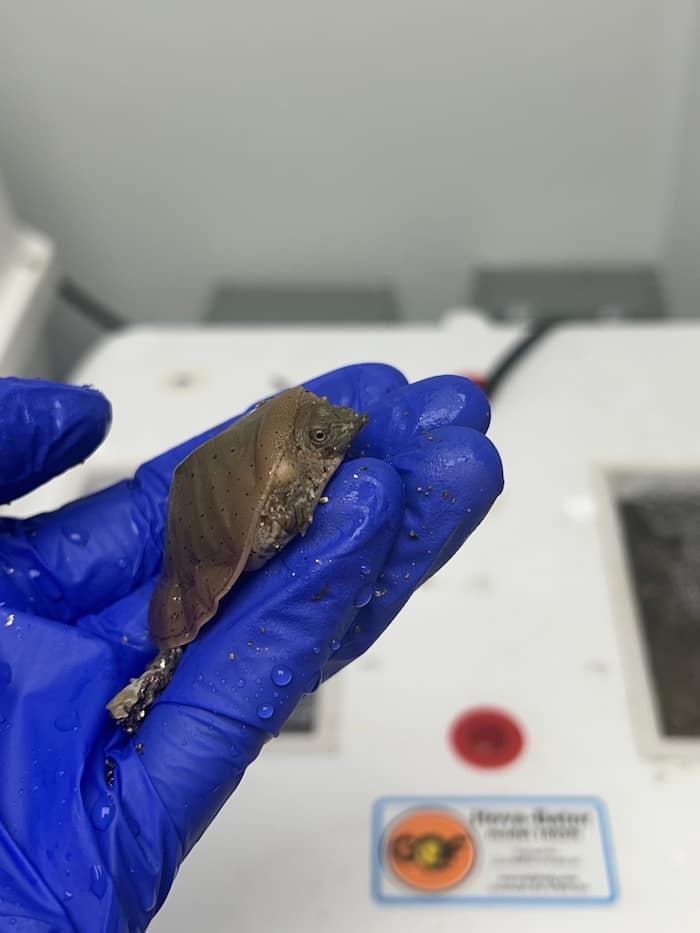Bite Wounds
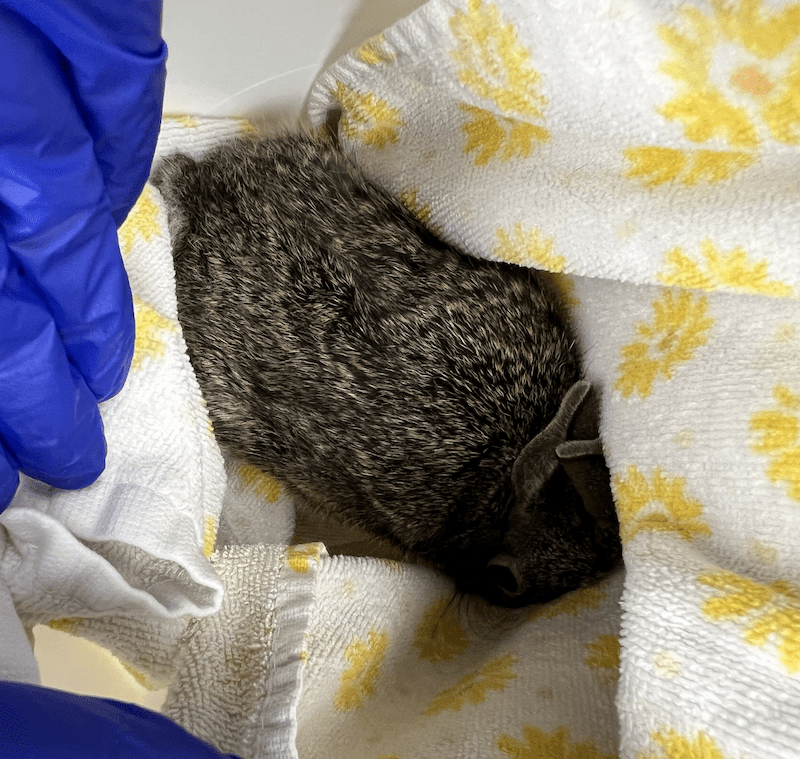
The Wildlife Medical Clinic has indeed seen it all in terms of injuries from human, domestic animal, and wildlife sources. Whether it be an accident or by instinct, all injuries, big and small, can become lethal to an animal if not adequately treated. One source in particular can be silent but deadly, wounds from a cat’s mouth.
A wound from a cat bite can harbor up to thirteen bacterial species from feline saliva. Most bites can host a mixture of multiple aerobic and anaerobic bacteria that can worsen puncture wounds and prevent healing or lead to sepsis. Several studies discovered that Pasteurella multocida is the most common pathogen within cat bites and is known to accelerate infections. At the Wildlife Medical Clinic, bite wounds are treated immediately with antibiotics and monitored very closely for any sign of infection that can indicate a difference between a healthy release and sepsis.
Case Correlation
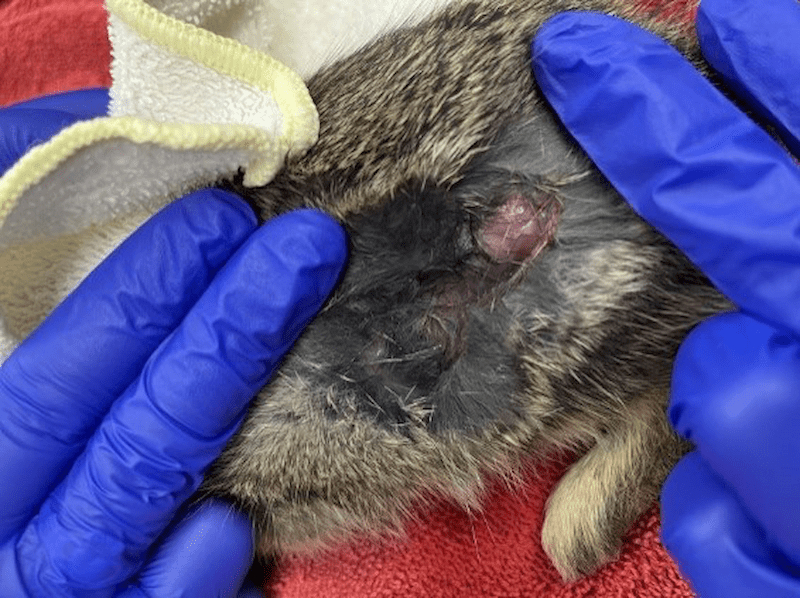
The Wildlife Medical Clinic recently treated a juvenile eastern cottontail after it was bitten by a cat. Upon examination, a large 1.5 inch by .5-inch de-gloving, which is a wound where skin is pulled off the underlying muscle and tissue. Also, a wound was found over the left stifle (knee), but it did not appear to enter the abdominal cavity.
Because of the very thin and friable nature of wild cottontail skin (imagine wet tissue paper), it was decided that any attempt to clip, clean, or suture the wound could cause further damage. Additionally, bite wounds should not be sutured closed, as that can trap dangerous bacteria under the skin. A simple flush of the wound was performed to remove excess debris.
A few other small abrasions were noticed but ultimately were of no concern. The eastern cottontail was ambulating (moving around) appropriately, was of a healthy weight, and had only mild dehydration. We decided that the best course of treatment was to provide fluids, pain medication, and antibiotics. To minimize stress and worsening of the wound, we were hands off as much as we could be with this patient.
The Outcome
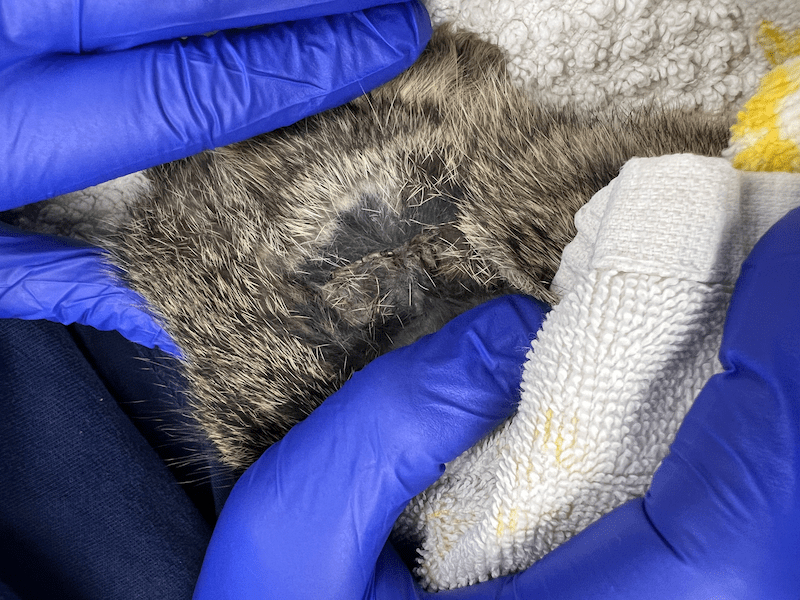
Young rabbits can heal their wounds with impressive speed, and several days later, the wound began to show signs of healing. With no signs of infection or pain, antibiotics and pain medications were discontinued from daily treatment with the plan to continue to monitor. Within eight days, the wound was fully scabbed and posed no threat to normal movement. The eastern cottontail was of healthy weight and was cleared for release! Another successful and rewarding case at the Wildlife Medical Clinic at the University of Illinois!
References:
Talan, D. A., Citron, D. M., Abrahamian, F. M., Moran, G. J., & Goldstein, E. J. C. (1999). Bacteriologic analysis of Infected Dog and Cat bites. New England Journal of Medicine, 340(2), 85–92. https://doi.org/10.1056/nejm199901143400202
Dire, D. J. (1991). Cat bite wounds: Risk factors for infection. Annals of Emergency Medicine, 20(9), 973–979. https://doi.org/10.1016/s0196-0644(05)82975-0
Written by: Madison, Class of 2027

